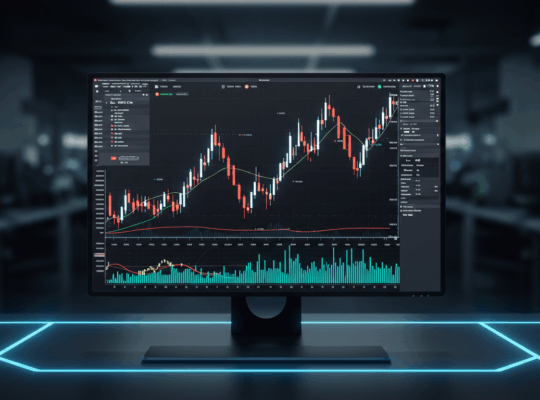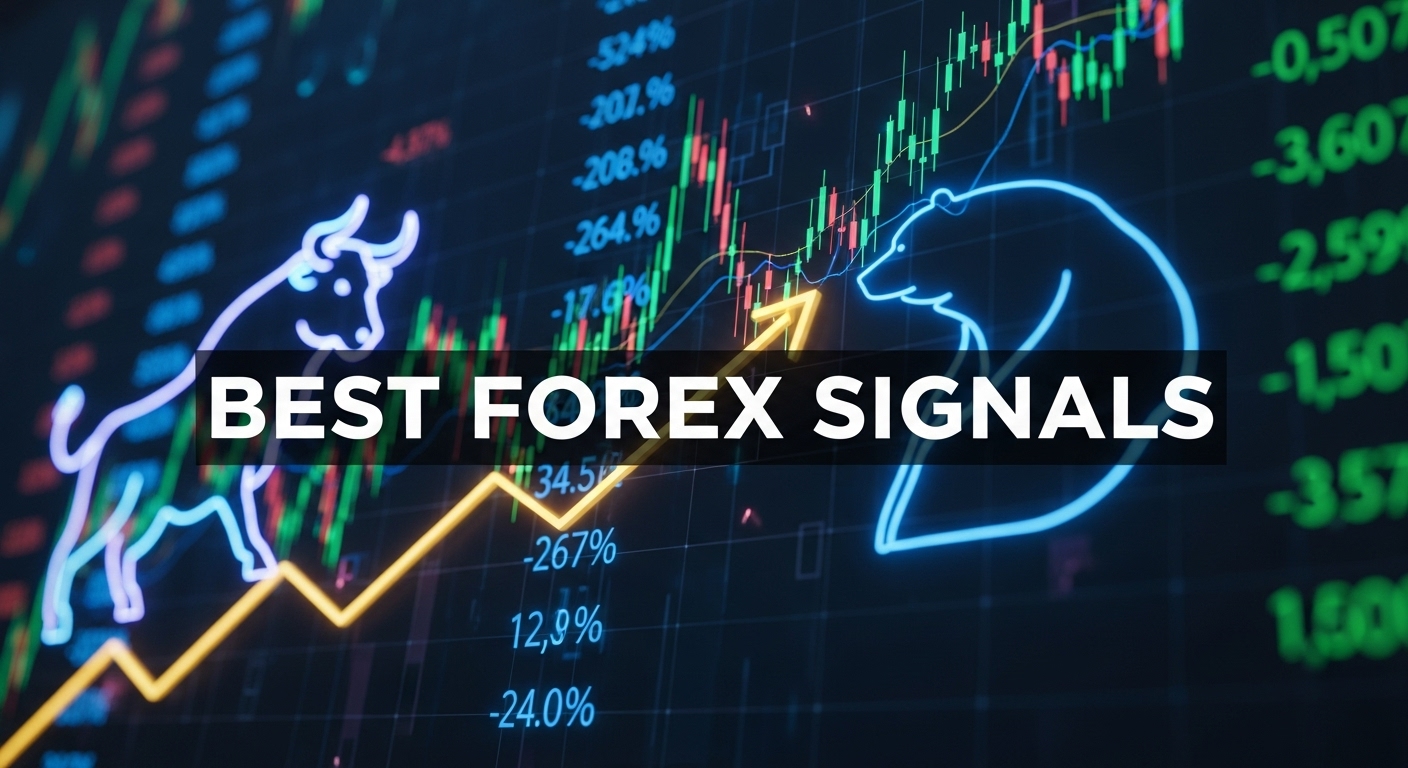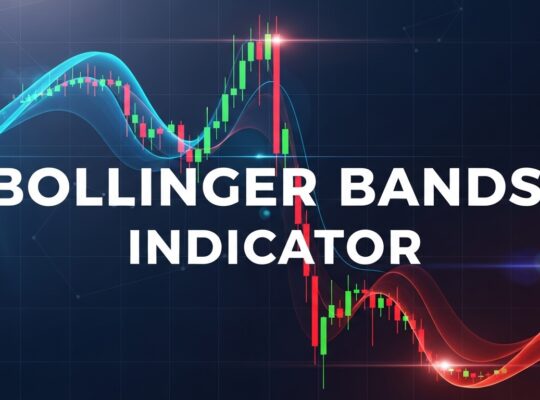The forex market is a complex beast influenced by everything from central bank decisions to unexpected geopolitical events. But what if I told you there’s a way to tap into professional-level market analysis without spending years learning every technical indicator or memorizing economic calendars?
Enter forex signals – your potential gateway to more informed trading decisions. Think of them as having a seasoned trader whispering trade ideas in your ear, complete with entry points, stop losses, and profit targets. But here’s where it gets tricky: not all forex signals are created equal. In fact, the difference between quality signals and poor ones can mean the difference between growing your account and watching it slowly drain away.
The best forex signals don’t just tell you what to trade; they educate you on why certain setups work, help you understand market dynamics, and most importantly, teach you proper risk management. Whether you’re a complete beginner looking for guidance or an experienced trader seeking to diversify your analysis sources, finding reliable forex signal providers can significantly impact your trading journey.
In this comprehensive guide, we’ll dive deep into everything you need to know about forex signals. We’ll explore what makes a signal provider truly exceptional, review the top services available in 2025, and give you the tools to make an informed decision that aligns with your trading goals and risk tolerance.
Understanding Forex Signals: The Foundation
Before we dive into specific providers, let’s establish exactly what forex signals are and how they can fit into your trading strategy. At their core, forex signals are trade recommendations that include specific entry points, stop loss levels, and take profit targets for currency pairs. Think of them as detailed blueprints for potential trades, crafted by experienced analysts who spend their days monitoring market conditions.
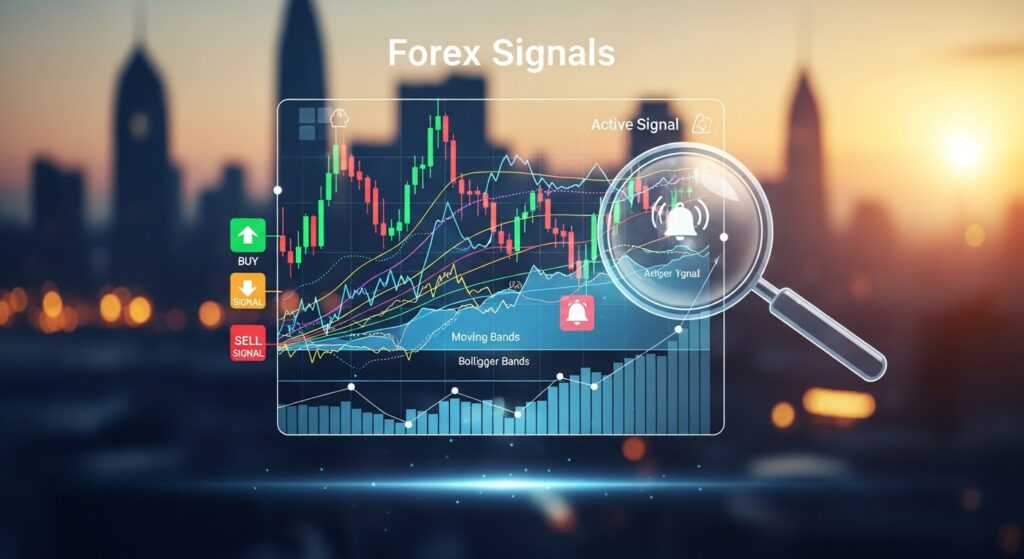
There are several types of forex signals, each with distinct advantages. Technical analysis signals rely on chart patterns, support and resistance levels, and various indicators like moving averages or RSI. These signals work on the principle that price action tends to repeat itself and that historical patterns can predict future movements. For traders who love charts and mathematical precision, technical signals often feel like a natural fit.
A typical forex signal might look something like this: “Buy EUR/USD at 1.0950, Stop Loss at 1.0920, Take Profit at 1.1020.” This simple message contains everything you need to execute a trade – but the real value lies in understanding the analysis behind it. The best signal providers don’t just give you the numbers; they explain the reasoning, whether it’s based on technical patterns, fundamental analysis, or a combination of both.
Fundamental analysis signals take a different approach, focusing on economic data, central bank policies, and geopolitical events that drive currency values. When the Federal Reserve hints at interest rate changes or unexpected inflation data gets released, fundamental analysts are already positioning for the market’s reaction. These signals tend to capture longer-term moves but require a deeper understanding of economic principles.
The most sophisticated signal providers use hybrid approaches, combining technical and fundamental analysis to create more robust trade recommendations. They might identify a technical setup but wait for fundamental confirmation before sending the signal, or use economic events to time their technical entries more precisely.
Signal delivery has evolved significantly with technology. Gone are the days when traders had to wait for email notifications or phone calls. Modern signal services use instant messaging apps, push notifications, SMS alerts, and even automated trading systems that can execute trades directly in your account. The speed of delivery can be crucial, especially for short-term trading signals where every minute matters.
Understanding timeframes is equally important when choosing forex signals. Scalping signals might only be valid for minutes or hours, requiring constant attention and quick execution. Swing trading signals, on the other hand, might unfold over days or weeks, making them more suitable for traders who can’t monitor markets constantly. The key is matching the signal timeframe to your lifestyle and trading preferences.
What Makes the Best Forex Signal Providers Stand Out
After analyzing hundreds of forex signal services over the years, certain characteristics consistently separate the wheat from the chaff. The best providers understand that successful trading isn’t just about winning trades – it’s about managing risk, maintaining consistency, and helping traders develop their skills over time.

Transparency tops the list of must-have qualities. Exceptional signal providers publish their real-time results, including both winners and losers, without cherry-picking their best performances. They provide detailed trade histories, average pip gains, win rates, and most importantly, maximum drawdown periods. When a provider refuses to show verified track records or only highlights their success stories, consider it a red flag.
Consistency matters more than flashy win rates. A service claiming 95% accuracy might sound appealing, but if their average winning trade gains 10 pips while their average loss costs 200 pips, you’ll slowly bleed money despite winning most trades. The best providers maintain steady performance across different market conditions, demonstrating they can adapt their strategies rather than relying on favorable market phases.
Educational value distinguishes premium services from simple trade alerts. Top-tier providers explain their analysis, share market insights, and help subscribers understand why certain trades are recommended. This educational component serves two purposes: it builds confidence in the signals and gradually improves your own trading knowledge. Over time, you’ll start recognizing similar setups independently, making you a better trader overall.
Customer support quality often reflects the overall service standard. The best providers offer responsive support, answer questions about their methodology, and provide guidance on trade execution. They understand that their subscribers have different experience levels and account sizes, so they tailor their communication accordingly.
Risk management integration separates professional services from amateur operations. Quality providers always include stop loss levels, often suggest position sizing guidelines, and educate subscribers about proper money management. They understand that preserving capital during losing streaks is just as important as maximizing gains during winning streaks.
Market coverage depth indicates the provider’s analytical capabilities. While anyone can analyze EUR/USD or GBP/USD, the best services cover multiple currency pairs, understand correlation between pairs, and can identify opportunities across different market sessions. This broader perspective often leads to more diverse and profitable trading opportunities. Technology infrastructure plays an increasingly important role in signal delivery. The best providers use redundant communication systems, ensure signals reach subscribers instantly, and often provide mobile apps for on-the-go access. In fast-moving markets, a few minutes delay can mean the difference between a profitable trade and a missed opportunity.
Top Forex Signal Providers in 2025

After extensive research and analysis, several forex signal providers have consistently demonstrated excellence in 2025. Each offers unique strengths, catering to different trader types and preferences.
FXPremiere has earned a reputation as one of the most reliable signal services, particularly for traders seeking consistent performance over flashy win rates. Their approach combines technical and fundamental analysis, with signals typically targeting 30-80 pip moves over several days. What sets FXPremiere apart is their commitment to education – each signal comes with detailed market analysis explaining the reasoning behind the trade recommendation. Their track record shows approximately 68% winning trades with an average risk-reward ratio of 1:2.5, creating positive expectancy even with a moderate win rate. Subscribers particularly appreciate their transparency, with live trading results updated in real-time on their website.
Learn 2 Trade stands out for beginner-friendly approach while maintaining professional-grade analysis. They excel at breaking down complex market concepts into digestible insights, making their signals accessible to newer traders without oversimplifying the analysis. Their telegram channel provides not just signals but ongoing market commentary, helping subscribers understand broader market dynamics. With coverage across major and minor currency pairs, Learn 2 Trade typically achieves 70-75% accuracy with conservative risk management. Their educational webinars and trading courses add significant value beyond the signals themselves.
1000pip Climber System takes a unique systematic approach, focusing on high-probability setups based on specific price action patterns. Rather than providing numerous daily signals, they concentrate on fewer, higher-quality opportunities, often targeting moves of 100 pips or more. This selective approach appeals to traders who prefer quality over quantity. Their systematic methodology means signals are less dependent on individual analyst opinions, creating more consistent results over time. Performance data shows they achieve profitability in roughly 7 out of 10 months, with average monthly gains ranging from 150-400 pips.
Daily Forex offers comprehensive market coverage with signals spanning currency pairs, commodities, and indices. Their team of analysts provides both short-term and long-term signals, allowing subscribers to choose based on their trading style and time availability. What distinguishes Daily Forex is their market timing – they excel at identifying optimal entry points within larger trends. Their premium service includes detailed technical analysis reports, economic calendar highlights, and risk management guidance. Subscriber feedback consistently praises their customer support and educational resources.
ForexSignals.com combines social trading elements with traditional signal services, creating a community-driven approach to forex trading. Their platform allows subscribers to interact with analysts, ask questions about specific trades, and learn from other traders’ experiences. The service provides both automated signals and live trading sessions where analysts explain their decision-making process in real-time. This interactive approach particularly benefits visual learners who understand concepts better through demonstration rather than written analysis.
Pip Dealer focuses on precision timing and risk management, with signals designed for busy professionals who can’t monitor markets constantly. Their approach emphasizes lower-frequency, higher-conviction trades that don’t require constant attention. Each signal includes detailed risk management instructions, position sizing suggestions based on account balance, and clear exit strategies for both profit and loss scenarios. Their track record shows consistent monthly profitability with controlled drawdown periods, making them popular among conservative traders.
The choice between these providers often comes down to personal preferences regarding communication style, signal frequency, and educational emphasis. Many successful traders actually subscribe to multiple services, using them to confirm their own analysis or discover opportunities they might have missed.
Free vs Paid Forex Signals: Understanding the Trade-offs
The decision between free and paid forex signals represents one of the most common dilemmas facing new traders. While the appeal of free signals is obvious – no upfront investment required – understanding the true cost-benefit analysis requires looking beyond the price tag.
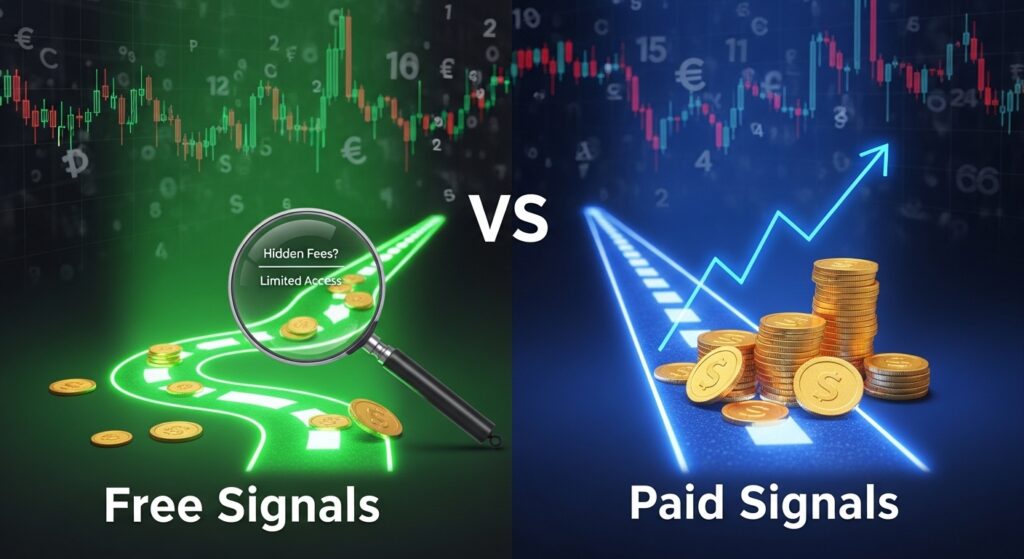
Free forex signals are widely available through social media groups, trading forums, and some broker-sponsored services. These signals can provide valuable market insights and help beginners understand how trade recommendations are structured. Many successful traders started their journey by following free signals, using them as educational tools while developing their own analytical skills.
However, free signals come with inherent limitations that become apparent over time. Most free services lack the resources for comprehensive market analysis, relying on basic technical indicators or simplified chart patterns. The quality can be inconsistent, with no accountability for poor performance since subscribers haven’t paid for the service. Additionally, free signal providers often have conflicts of interest – they might be promoting specific brokers or trying to upsell premium services.
The timing of free signals often creates challenges. Since these services aren’t monetized directly through subscriptions, providers may not prioritize immediate signal delivery or real-time updates. In volatile markets where prices can move rapidly, delayed signals can result in significantly different entry prices than recommended, negatively impacting trade outcomes.
Paid forex signals justify their cost through several key advantages. Professional signal providers invest in advanced analytical tools, employ experienced traders, and maintain infrastructure for reliable signal delivery. This typically translates to more accurate market analysis, better timing, and higher overall consistency. The subscription model aligns provider interests with subscriber success – happy customers renew their subscriptions, creating incentive for quality service.
Premium signal services often include additional value beyond basic trade alerts. Educational content, market analysis, one-on-one support, and risk management guidance are common features that help subscribers improve their trading skills over time. This educational component can be worth the subscription cost alone, especially for developing traders.
The price range for paid signals varies significantly based on service quality and included features. Budget services typically range from $30-80 per month, offering basic signals with limited support. Mid-tier services ($100-250 monthly) usually provide more comprehensive analysis, multiple communication channels, and educational resources. Premium services can cost $300-500 monthly but often include personalized guidance, priority support, and access to professional-grade research.
When evaluating cost versus benefit, consider the potential return on investment. If quality signals help you avoid even one significant loss per month or capture one additional profitable trade, the subscription cost is often justified. However, this calculation only works if you have sufficient capital to trade meaningfully – paying $200 monthly for signals when trading a $500 account rarely makes financial sense.
Many experienced traders recommend starting with reputable free signals while building capital and experience, then gradually transitioning to paid services as account size and skill level increase. This approach allows you to evaluate different signal styles and providers without significant upfront investment while developing the discipline and knowledge needed to maximize paid signal benefits.
How to Choose the Right Forex Signal Provider
Selecting a forex signal provider requires careful evaluation across multiple dimensions, much like choosing any professional service that impacts your financial well-being. The decision shouldn’t be based solely on advertised win rates or promotional offers, but rather on how well the service aligns with your trading goals, risk tolerance, and learning objectives.

Start by evaluating the provider’s track record through verified performance data. Legitimate services publish comprehensive statistics including total trades, win percentage, average pip gains, maximum drawdown, and monthly performance over extended periods. Look for consistency across different market conditions – a provider might show excellent results during trending markets but struggle during sideways or volatile periods. The most reliable providers maintain profitability across various market environments, demonstrating adaptability rather than dependency on specific conditions.
Consider the analysis methodology behind the signals. If you prefer technical analysis, look for providers who clearly explain their chart patterns, indicator usage, and price action interpretation. For fundamentally-oriented traders, seek services that incorporate economic data, central bank policies, and geopolitical analysis into their recommendations. The best providers often combine both approaches, using fundamental analysis for directional bias and technical analysis for precise entry and exit timing.
Communication quality and frequency matter more than many traders initially realize. Some providers send numerous signals daily, which can be overwhelming and may indicate a “spray and pray” approach rather than selective, high-quality analysis. Others might send only a few signals weekly, focusing on high-probability setups. Consider your lifestyle and trading capacity – if you can only check markets twice daily, frequent scalping signals won’t be practical regardless of their accuracy.
Risk management integration should be non-negotiable when evaluating signal services. Quality providers always include stop loss levels, often suggest position sizing based on account balance, and educate subscribers about money management principles. They understand that protecting capital during losing streaks is equally important as maximizing gains during winning periods. Avoid any service that doesn’t emphasize risk management or suggests risking large percentages of your account per trade.
Customer support quality often reflects overall service standards. Test the provider’s responsiveness by asking questions about their methodology, performance data, or signal delivery process. Professional services respond promptly and thoroughly, demonstrating they value subscriber relationships. Poor communication during the evaluation phase often indicates ongoing support issues.
Trial periods or money-back guarantees provide valuable opportunities to test services risk-free. Reputable providers offer trial periods because they’re confident in their service quality. Use trial periods to evaluate signal accuracy, delivery timing, educational value, and overall fit with your trading style. However, remember that short trial periods may not capture long-term performance patterns or show how the service handles difficult market conditions.
Technology compatibility ensures you can receive and act on signals effectively. Modern signal services offer multiple delivery methods including mobile apps, telegram channels, email alerts, and SMS notifications. Consider your daily routine and technology preferences – if you’re frequently away from your computer, mobile-friendly signal delivery becomes crucial.
Cost evaluation should consider total value rather than just monthly fees. A more expensive service that provides better education, superior analysis, and stronger customer support might offer better value than cheaper alternatives with minimal features. Calculate potential returns based on realistic scenarios – if quality signals help you capture an additional 50-100 pips monthly while trading standard lots, a $200 monthly subscription easily pays for itself.
Maximizing Success with Forex Signals
Receiving quality forex signals represents just the beginning of successful signal-based trading. How you implement, manage, and learn from these signals ultimately determines your long-term success. Many traders make the mistake of treating signals as guaranteed profits rather than professional recommendations that require proper execution and risk management.

Position sizing forms the foundation of successful signal trading. Even the most accurate signals become unprofitable if you risk too much capital per trade. Professional traders typically risk 1-3% of their account balance per trade, ensuring that even a string of losses won’t devastate their capital. When following signals, calculate your position size based on the distance between entry price and stop loss, ensuring your predetermined risk amount remains constant regardless of the specific trade setup.
Timing execution properly can significantly impact signal profitability. Markets move continuously, and the difference between the signal price and your actual execution price (slippage) can affect results. When possible, use limit orders to enter at the exact signal price rather than market orders that might fill at less favorable levels. For signals requiring immediate execution, consider the current market volatility and spread costs when deciding whether to proceed.
Understanding market context enhances signal effectiveness. Quality signal providers consider broader market conditions when generating recommendations, but subscribers should also maintain awareness of major news events, economic releases, and technical levels that might impact their trades. For example, entering a signal minutes before major economic data releases often increases risk beyond normal parameters.
Developing a systematic approach to signal evaluation helps maintain consistency and emotional discipline. Not every signal will align perfectly with current market conditions or your risk tolerance. Having predetermined criteria for when to take signals, when to skip them, and when to modify risk parameters prevents emotional decision-making that often leads to poor outcomes.
Trade management after entry separates successful signal users from those who struggle. While signals provide initial stop loss and take profit levels, market conditions may warrant adjustments. Learning to trail stop losses during favorable moves, take partial profits at key levels, or exit early when market conditions change requires experience but can significantly improve overall results.
Keeping detailed records of signal performance helps identify patterns and areas for improvement. Track not just whether signals win or lose, but also factors like execution timing, slippage costs, and how well you followed the recommended risk management. This data helps you understand which types of signals work best for your trading style and execution abilities.
Emotional management becomes crucial when following signals, especially during inevitable losing streaks. Remember that even the best signal providers experience periods of poor performance – it’s the nature of financial markets. Maintaining discipline during these periods, continuing to follow proper risk management, and avoiding the temptation to increase position sizes to recover losses quickly distinguishes long-term successful traders from those who blow up their accounts.
Consider combining signals with your own market analysis as your experience grows. Use signals as confirmation for your own trade ideas or as alerts to market opportunities you might have missed. This approach gradually builds your independent trading skills while still benefiting from professional analysis.
Common Pitfalls and How to Avoid Them
Despite the potential benefits of forex signals, many traders fall into predictable traps that undermine their success. Understanding these common mistakes and developing strategies to avoid them can mean the difference between profitable signal trading and disappointing results.
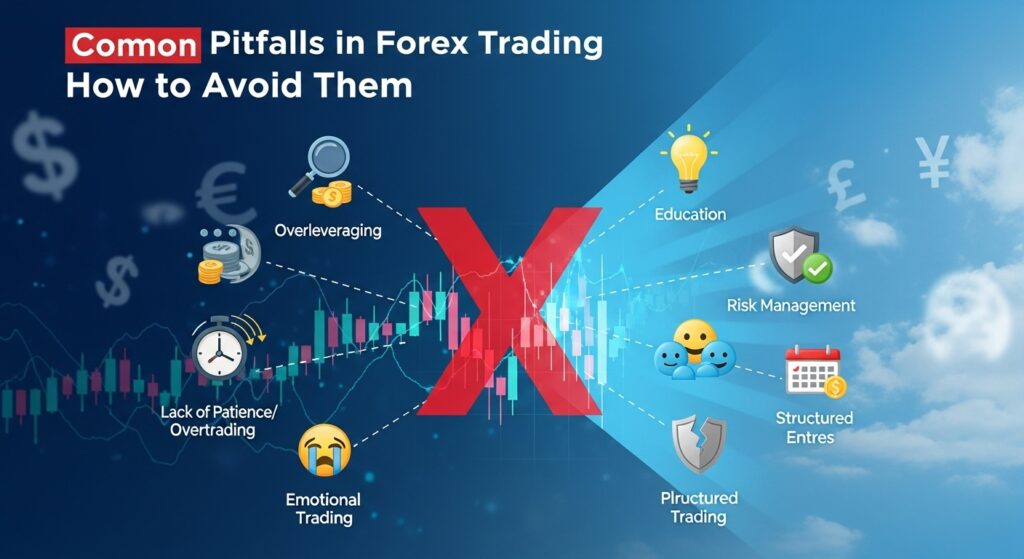
The most frequent error involves treating signals as guaranteed profits rather than probability-based recommendations. This mindset leads to poor risk management, unrealistic expectations, and emotional trading decisions. Remember that even services with 80% accuracy will have losing trades – the key is ensuring that your wins are large enough to offset your losses while preserving capital for future opportunities.
Over-leveraging represents another dangerous pitfall. The excitement of following “professional” signals sometimes leads traders to risk larger amounts than they normally would. However, increased position sizes magnify both gains and losses. A string of losing signals with oversized positions can quickly deplete trading capital, regardless of the signals’ long-term profitability.
Lack of patience often destroys otherwise sound signal-based strategies. Quality signal providers typically focus on high-probability setups rather than constant trade generation. Traders accustomed to frequent action might feel compelled to supplement official signals with their own trades, often leading to overtrading and reduced overall performance.
Ignoring market conditions when executing signals creates unnecessary risks. Professional signal providers consider broader market context, but individual traders must also assess whether current conditions support the recommended trade. For example, entering long-term signals during major news announcements or in extremely volatile markets might warrant position size reduction or trade avoidance.
Unrealistic expectations about consistency can lead to premature service switching. No signal provider profits every month or avoids drawdown periods. Markets go through cycles that favor different trading approaches – trend-following signals excel during directional markets but struggle during choppy conditions, while reversal signals might thrive in range-bound environments but underperform in strong trends.
Poor execution discipline undermines even excellent signals. This includes entering trades at significantly different prices than recommended, ignoring stop loss levels, or exiting profitable trades too early due to fear. Developing systematic execution procedures and sticking to them regardless of emotional impulses is crucial for signal-based success.
Dependence rather than education represents a long-term strategic error. While signals can provide immediate trading opportunities, failing to learn from them limits your growth as a trader. The best signal users gradually develop their own analytical skills, using professional signals as education rather than permanent crutches.
Account size mismatch often creates problems for signal users. Signals designed for larger accounts might not translate well to smaller capital bases due to minimum position sizes, spread costs relative to target profits, or recommended risk amounts that exceed appropriate percentages for smaller accounts.
To avoid these pitfalls, develop clear rules for signal usage before you begin. Define your maximum risk per trade, criteria for signal selection, execution procedures, and performance evaluation methods. Write these rules down and refer to them regularly, especially during stressful trading periods when emotions might override logical decision-making.
Regular performance reviews help identify problems before they become serious. Monthly analysis of your signal-based trading should include not just profit/loss results but also execution quality, rule adherence, and areas for improvement. This systematic approach helps you continuously refine your signal usage for better long-term results.
The Future of Forex Signal Services
The forex signal industry continues evolving rapidly, driven by technological advances and changing trader expectations. Understanding these trends can help you make better decisions about signal services and prepare for future developments that might impact your trading approach.

Artificial intelligence and machine learning are increasingly integrated into signal generation processes. Modern AI systems can analyze vast amounts of market data, identify patterns that humans might miss, and adapt to changing market conditions more quickly than traditional analytical methods. However, AI-generated signals aren’t automatically superior to human analysis – they excel at processing information but may struggle with unexpected events or unprecedented market conditions.
Real-time sentiment analysis represents another technological frontier. Advanced signal services now incorporate social media sentiment, news flow analysis, and retail trader positioning data into their recommendations. This additional layer of information can provide early warnings about potential market reversals or confirm existing directional biases.
Mobile-first approaches are becoming standard rather than optional. Modern traders expect seamless signal delivery across devices, instant notifications, and the ability to execute trades directly from signal alerts. Signal providers increasingly focus on user experience design, making their services more intuitive and accessible for traders with varying technical skills.
Regulatory developments continue shaping the signal industry. Many jurisdictions now require signal providers to register as investment advisors or comply with specific disclosure requirements. While this increases costs for providers, it offers better protection for subscribers through standardized performance reporting and customer protection measures.
Social trading integration blurs the lines between traditional signal services and copy trading platforms. Modern services often include community features, allowing subscribers to interact with analysts and other traders. This social element can enhance the educational value of signals while creating more engagement and retention.
Personalization and customization are becoming more sophisticated. Advanced services now offer signals tailored to specific account sizes, risk tolerances, and trading styles rather than one-size-fits-all recommendations. Machine learning algorithms can learn individual trader preferences and adjust signal delivery accordingly.
Blockchain technology and smart contracts might revolutionize signal verification and payment systems. Immutable performance records could eliminate questions about signal accuracy, while automated payment systems could tie subscription costs directly to signal performance.
These developments suggest that successful signal services will increasingly emphasize technology, transparency, and personalization while maintaining the human expertise that drives quality market analysis. For signal users, this means access to more sophisticated tools and better-tailored services, but also the need to develop skills for evaluating increasingly complex offerings.
Conclusion
Navigating the world of forex signals doesn’t have to feel like wandering through a maze blindfolded. Throughout this comprehensive guide, we’ve explored the essential elements that separate exceptional signal services from mediocre ones, examined top providers in 2025, and outlined the strategies needed to maximize your success with professional trading recommendations.
The most important takeaway is that forex signals are tools, not magic solutions. Like any tool, their effectiveness depends entirely on how skillfully you use them. The best signals in the world won’t help if you ignore risk management, let emotions drive your decisions, or fail to understand the analysis behind the recommendations. Conversely, even moderately accurate signals can be highly profitable when combined with proper execution, disciplined money management, and continuous learning.
Remember that choosing a signal provider is ultimately about finding a service that aligns with your trading goals, risk tolerance, and lifestyle. A scalping service that sends dozens of signals daily might work perfectly for a full-time trader but could be overwhelming for someone with a day job. Similarly, a conservative swing trading service might frustrate an action-oriented trader looking for frequent opportunities.
The key to long-term success lies in treating signal services as educational partnerships rather than simple trade alert systems. The providers we’ve highlighted excel not just at generating profitable trade ideas, but at helping their subscribers understand market dynamics, develop better trading habits, and gradually build independent analytical skills. This educational component often proves more valuable than individual trade profits, creating a foundation for sustained trading success.
As you begin or continue your journey with forex signals, start conservatively. Use small position sizes while you learn to execute signals properly, keep detailed records of your performance, and don’t be afraid to ask questions or seek clarification from your chosen provider. Most importantly, maintain realistic expectations – even the best traders experience losing streaks, and building trading success takes time and patience.
The forex market will always present opportunities for prepared traders. Quality signal services can help you identify and capitalize on these opportunities while you develop the skills and experience needed for long-term success. Whether you’re just starting your trading journey or looking to enhance your existing strategies, the right signal service can serve as a valuable mentor, guide, and analytical resource. Take action today by researching the providers that interest you most, taking advantage of trial periods, and beginning your journey toward more informed and potentially profitable trading decisions. Your future trading success starts with the choices you make right now.
Frequently Asked Questions
Are forex signals actually profitable?
Quality forex signals can be profitable when used properly, but they’re not guaranteed money-makers. The profitability depends largely on the service quality, your execution skills, and adherence to risk management principles. Professional signal providers typically achieve 60-75% win rates with positive risk-reward ratios, creating profitable outcomes over time. However, individual results vary based on factors like timing of execution, position sizing, and market conditions. The key is choosing reputable providers with verified track records and maintaining realistic expectations about consistency and drawdown periods.
How much money can I realistically make with forex signals?
Returns from forex signals depend heavily on your account size, risk management approach, and the quality of signals you follow. Professional traders typically target 5-15% monthly returns, though this includes significant variation. A $10,000 account following quality signals with proper risk management might generate $500-1,500 monthly, but some months will be losses. More importantly than absolute returns, focus on consistent profitability over time. Avoid services promising unrealistic returns like 50-100% monthly – these almost always lead to account destruction through excessive risk-taking.
Should beginners use forex signals or learn to trade independently first?
Beginners can benefit from quality forex signals, but they should be used as educational tools rather than shortcuts to profits. Good signal services explain their analysis, helping new traders understand market dynamics while providing structured trade opportunities. However, beginners should start with small position sizes, focus on learning rather than just profits, and gradually develop independent analytical skills. The goal should be using signals to accelerate learning while building the foundation for eventual independent trading success.
What’s the difference between forex signals and copy trading?
Forex signals provide trade recommendations that you manually execute in your account, giving you control over timing, position sizes, and risk management. Copy trading automatically replicates another trader’s positions in your account, typically with less control over individual trade decisions. Signals offer more flexibility and learning opportunities since you see the analysis and make execution decisions. Copy trading is more passive but may not match your risk tolerance or account size. Many traders prefer signals for the educational value and execution control they provide.
How can I tell if a forex signal provider is legitimate?
Legitimate signal providers demonstrate transparency through verified performance records, clear contact information, and professional communication. Look for real-time trade results published on their website, customer testimonials you can verify, and detailed explanations of their analytical methodology. Red flags include guaranteed profit claims, refusal to show historical performance, pressure sales tactics, and lack of proper risk disclosure. Reputable providers offer trial periods, maintain professional websites, and provide educational content beyond just trade alerts. Always verify performance claims through third-party verification when possible.




